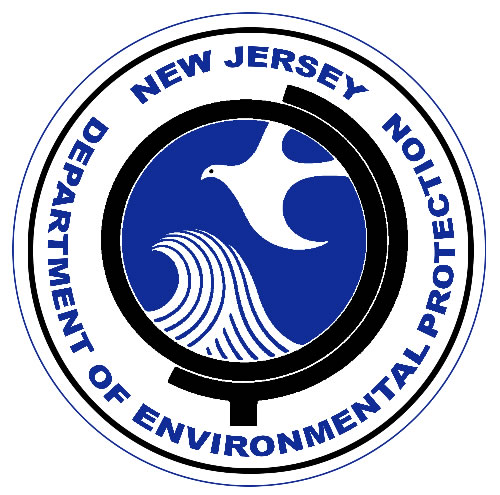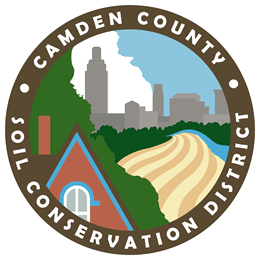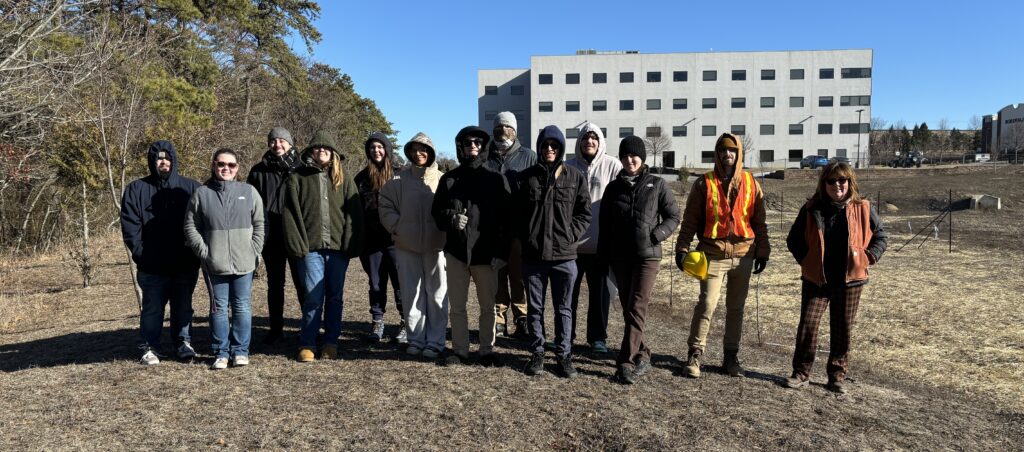
OCSCD’s Senior Erosion Control Specialist Brittany Moore and Inspector 1 Ben Hayden, along with soil health expert Eileen Miller, Habitat Coordinator for the South Jersey Resource Conservation & Development Council (SJRC&D) provided their knowledge and expertise in soil conservation practices to students enrolled in Kean University’s Principles of Environmental Soil Science course, taught by Professor Becky Laboy at the Kean-Ocean campus in Toms River, NJ. Through PPT presentation, followed by a guided field trip, the students explored how the state’s Soil Erosion and Sediment Control Standards are implemented on construction project sites and learned how retrofitted stormwater basins improve soil structure, water quality and ecosystem health.
The chilly March day began with classroom presentations by OCSCD and SJRC&D staff, introducing students to the New Jersey Soil Erosion and Sediment Control Act, which requires that all construction projects disturbing more than 5,000 square feet of land adhere to specific erosion control measures. These measures are outlined in the New Jersey Soil Erosion and Sediment Control Standards, which include 32 Vegetative and Engineering Standards designed to prevent soil loss and protect water bodies.
In addition to soil erosion control, students learned about the importance of properly functioning stormwater basins. When stormwater basins become compacted or clogged with sediment, they fail to effectively manage runoff, leading to erosion, flooding, and poor water infiltration. The class explored how failing basins can be retrofitted by sowing native plant seeds. Native grasses and flowering perennials, with their deep root systems, help decompact the soil at the basin bottom, allowing water to infiltrate more efficiently. These plants also provide critical habitat for wildlife, including Monarch butterflies and other pollinators.
After the presentations, students participated in a guided field tour of active construction sites in Ocean County. Ms. Moore, Mr. Hayden, and Ms. Miller provided expert insight into how erosion control measures are implemented to prevent sediment runoff and protect local waterways. The students saw firsthand how techniques such as sediment barriers, stabilized construction entrances, and vegetative cover help reduce soil loss and maintain site stability.
A highlight of the trip was a visit to the recently retrofitted stormwater basin at the Lakewood Township Department of Public Works. This basin was originally seeded with a mix of native grasses and flowering perennials, selected for their ability to improve soil structure and enhance stormwater infiltration. Additionally, two habitat islands were installed, featuring woody vegetation surrounded by seven-foot-tall deer fencing to ensure successful establishment. Trees play a crucial role in stormwater management, with the ability to absorb between 10 and 150 gallons of water per day.
Field trips like this one provide students with opportunities to learn from professionals, gain real-life hands-on experiences, and introduce students to possible career choices for the future. The Ocean County Soil Conservation District welcomes collaborations and partnerships with the community for the purpose of education and conservation of our soil and water resources.
Soil Erosion & Sediment Control Standards:
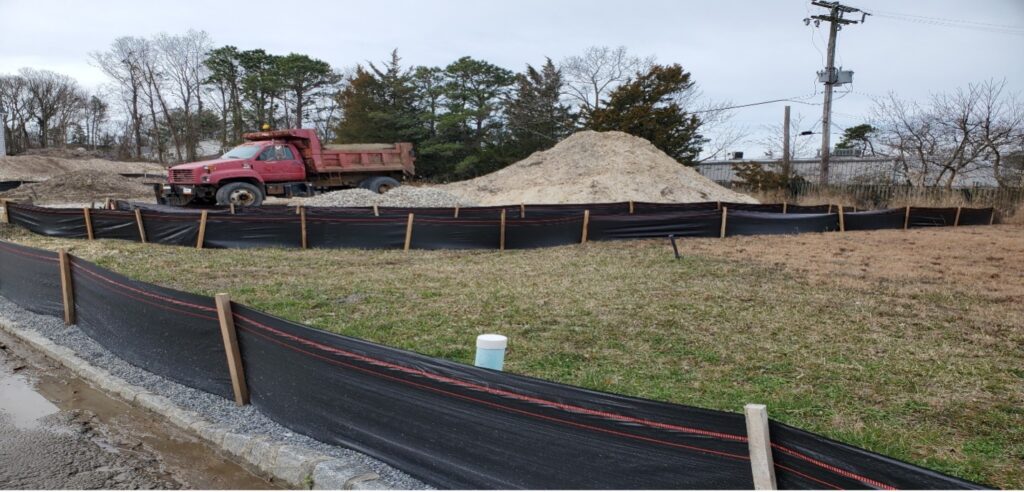
The purpose of the Standard for Sediment Barrier is to intercept and detain small amounts of sediment from unprotected areas of limited extent. Sediment Barriers are almost always established at the limits of a sites proposed disturbance area. These barriers specialize in preventing eroding soil from escaping a site and tracking onto roads, forests, neighboring properties and other offsite areas. These barriers come in different forms like silt fences, silt socks and staked haybales.
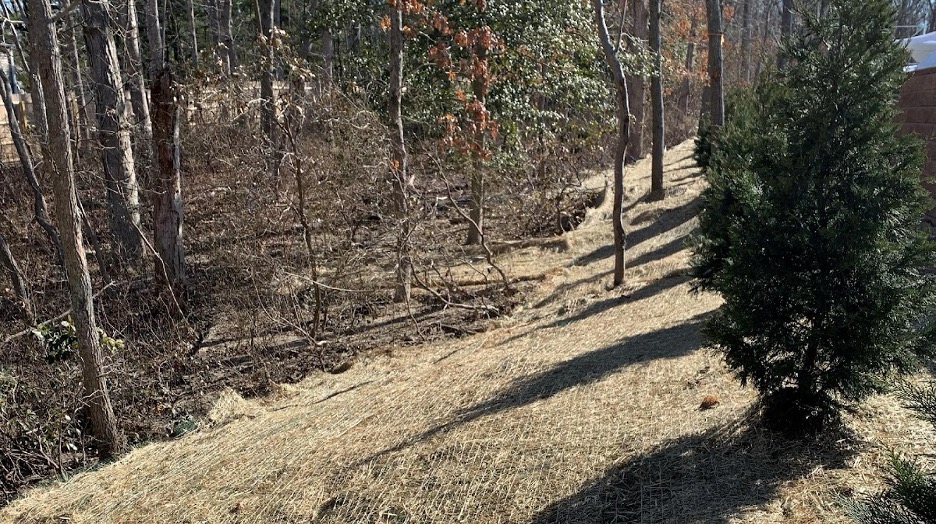
The Temporary Vegetative Cover for Soil Stabilization Standard prevents offsite environmental damage. Establishment of temporary vegetative cover for soil stabilization is required on soils exposed for periods of 2 – 6 months which are not being graded, not under active construction, or not scheduled for permanent seeding within 60 days. These soils have the potential for causing offsite environmental damage when eroded by wind and rain. The temporary vegetative cover slows the overland movement of stormwater runoff, increases infiltration and retains soil and nutrients on site, protecting streams or other stormwater conveyances. The temporary vegetative cover reduces damage to the soil and to the environment until permanent stabilization is accomplished.
The temporary vegetative cover is installed by creating a seedbed, selecting an appropriate grass species, broadcasting the seed onto the soil, covering the seed with mulch, and anchoring the mulch. (Shown in the photo is straw mulch covered with netting.)

The Stabilized Construction Access Standard reduces the trafficking or flow of sediment, oils, greases and diesel fuels onto paved roads or other impervious surfaces. This prevents pollutants from migrating into offsite drainage systems where they may enter directly into a waterway. By preventing or minimizing the tracking of sediments and other pollutants onto paved areas, significant reduction in construction related hydrocarbon pollution will also be controlled.
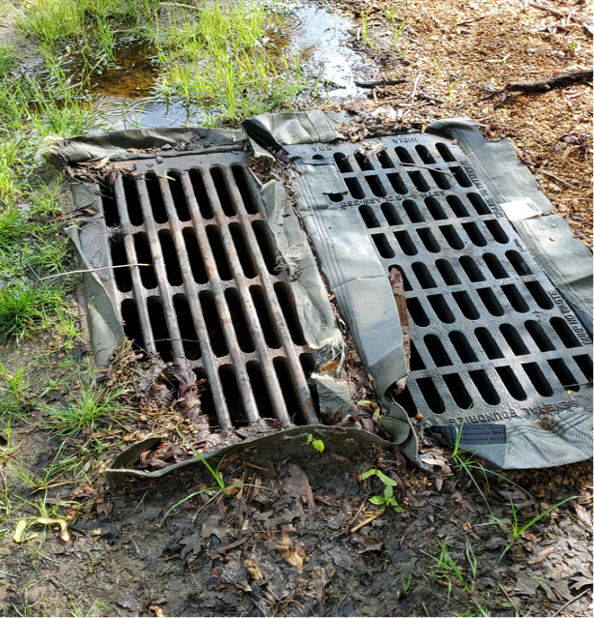
The Storm Sewer Inlet Protection Standard benefits local water quality. A temporary bag and settling facility is installed in a storm sewer inlet. It intercepts and retains sediment, preventing its entrance into the storm sewer system. Other debris such as vegetative matter and litter are also prevented from entering the storm sewer system. The bag is removed when the area draining toward the inlet has been stabilized.
Lakewood Township Stormwater Basin Retrofit Project Examples:
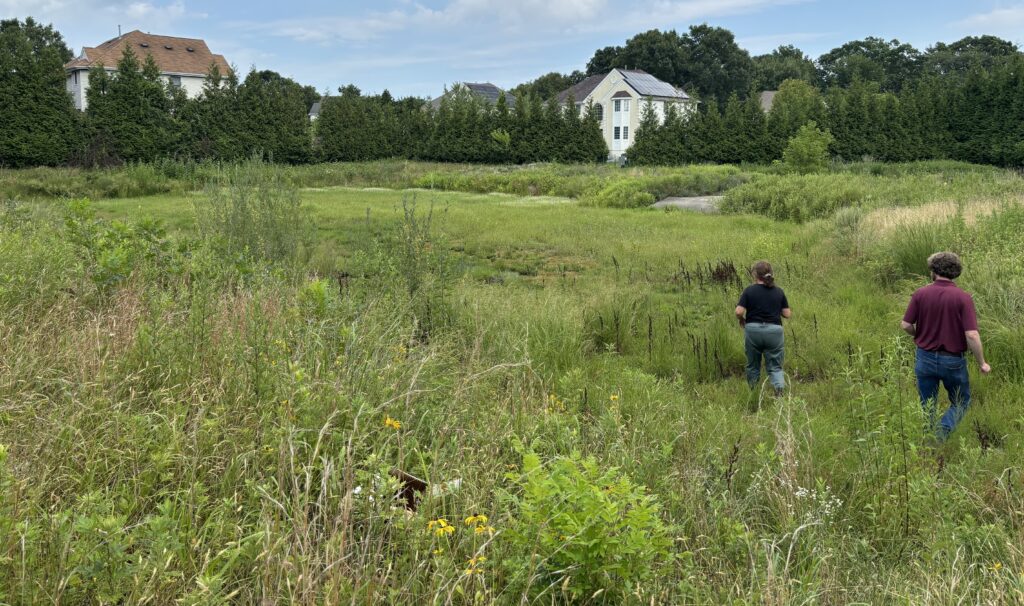
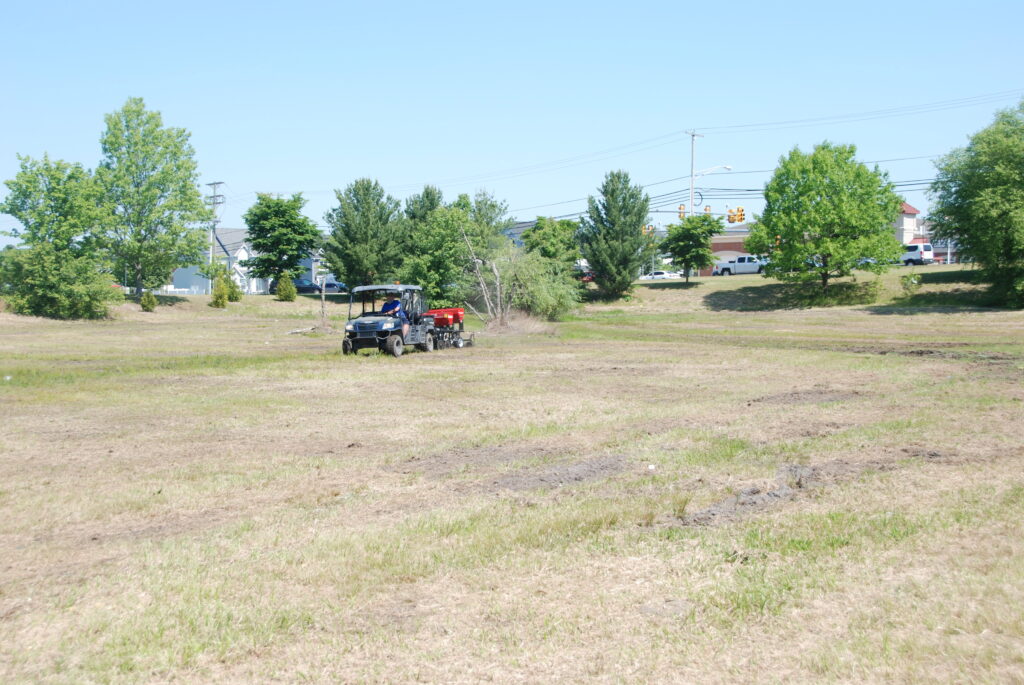
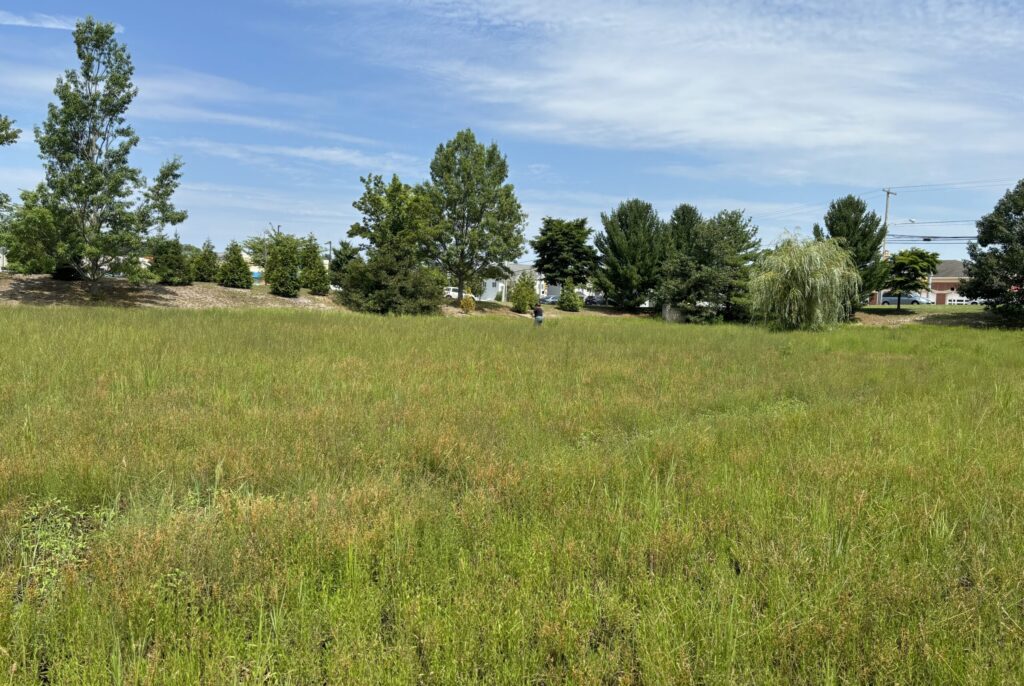
Funding for the Lakewood Township Stormwater Basin Retrofit Project is provided through a Federal 319(h) Water Quality Restoration grant (Grant # WM20-008) awarded by the NJ Department of Environmental Protection to the South Jersey Resource Conservation & Development Council in partnership with Ocean County Soil Conservation District, Camden County Soil Conservation District, and Lakewood Township Department of Public Works.
